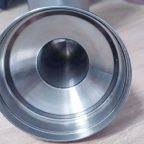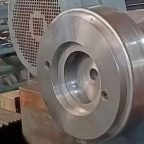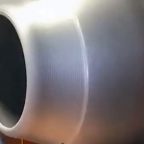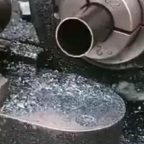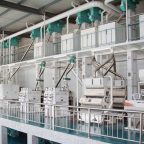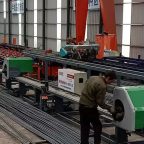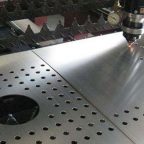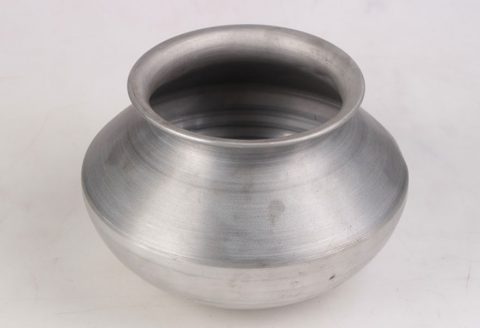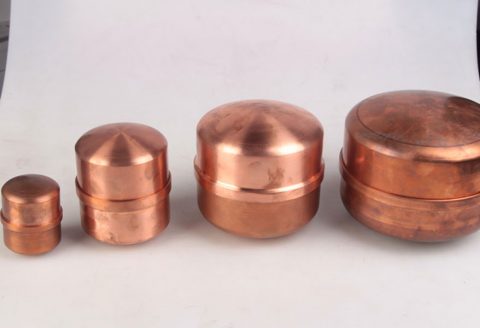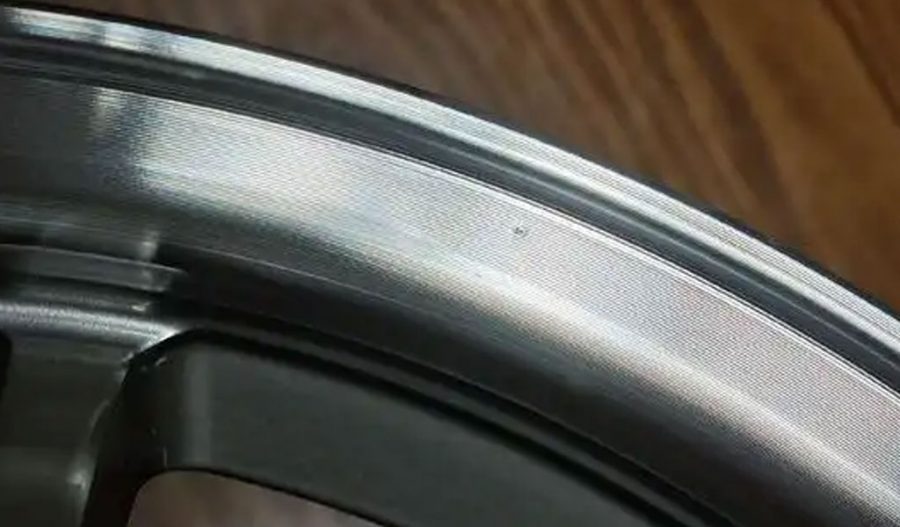
Spinning, a metalworking process involving the deformation of a rotating metal blank or preform over a mandrel, has emerged as a critical manufacturing technique in the aerospace industry, particularly for the production of aircraft engine components. This process, often referred to as metal spinning or spin forming, allows for the creation of seamless, axisymmetric parts with high precision, structural integrity, and material efficiency. In the context of aircraft engines, spinning is employed to fabricate components such as compressor and turbine disks, fan blades, combustor liners, and exhaust nozzles, which must withstand extreme temperatures, pressures, and mechanical stresses. The application of spinning in aircraft engine manufacturing represents a confluence of advanced materials science, precision engineering, and aerodynamic design, contributing to the performance, safety, and efficiency of modern aviation systems.
This article explores the multifaceted role of spinning in aircraft engine part production, delving into its historical development, technical principles, material considerations, specific applications, advantages, challenges, and future trends. By examining the process through a scientific lens, this comprehensive analysis aims to provide a thorough understanding of how spinning enhances the design and functionality of aircraft engines, supported by detailed tables comparing techniques, materials, and performance metrics.
Historical Context of Spinning in Aerospace
The origins of metal spinning can be traced to ancient civilizations, where artisans used rudimentary spinning techniques to shape metals into vessels and tools. However, its application in aerospace engineering emerged in the 20th century, driven by the demand for lightweight, durable components in aircraft engines. During World War II, spinning gained prominence as manufacturers sought efficient methods to produce complex geometries for military aircraft engines. The advent of jet propulsion in the 1940s and 1950s further accelerated the adoption of spinning, as turbine engines required components with precise tolerances and enhanced mechanical properties.
By the 1960s, advancements in computer numerical control (CNC) technology revolutionized spinning, enabling automated, high-precision forming of intricate engine parts. Companies such as General Electric, Rolls-Royce, and Pratt & Whitney integrated spinning into their manufacturing processes to produce components for iconic engines like the GE CF6 and Rolls-Royce RB211. Over the decades, spinning evolved from a niche technique to a cornerstone of aerospace manufacturing, driven by innovations in materials, tooling, and process control. Today, spinning is indispensable in producing parts for advanced engines powering commercial airliners, military jets, and spacecraft.
Principles of Spinning in Aircraft Engine Manufacturing
Mechanics of Spinning
Spinning involves rotating a metal blank or preform at high speed while applying localized pressure with a roller or tool to deform the material over a mandrel. The mandrel defines the final shape of the component, ensuring dimensional accuracy. The process can be categorized into two primary types: conventional spinning and shear spinning (or flow forming). Conventional spinning maintains the blank’s thickness while shaping it into a desired form, whereas shear spinning reduces the thickness to achieve elongated, thin-walled structures.
In aircraft engine manufacturing, shear spinning is particularly prevalent due to its ability to produce lightweight, high-strength components. The mechanics of spinning rely on plastic deformation, where the metal undergoes controlled yielding under compressive and tensile stresses. The rotational motion minimizes friction, allowing for smooth material flow and reducing the risk of defects such as cracking or wrinkling. Key process parameters include rotational speed, feed rate, roller geometry, and lubrication, all of which must be optimized to achieve the desired microstructure and mechanical properties.
Material Behavior During Spinning
The success of spinning depends on the material’s ductility, workability, and response to high strain rates. Aircraft engine components are typically made from advanced alloys such as titanium, nickel-based superalloys (e.g., Inconel 718), and aluminum, which offer exceptional strength-to-weight ratios and resistance to thermal and mechanical stresses. During spinning, these materials experience complex deformation paths, including elongation, compression, and shear, which influence their grain structure and mechanical properties.
For instance, titanium alloys, commonly used in compressor disks, exhibit high ductility at elevated temperatures, making them ideal for hot spinning processes. Nickel-based superalloys, used in turbine blades, require precise control of spinning parameters to prevent work hardening and maintain fatigue resistance. The interaction between material properties and process conditions is critical, as improper settings can lead to defects such as surface cracking, residual stresses, or anisotropic properties.
Hot vs. Cold Spinning
Spinning can be performed at ambient (cold) or elevated (hot) temperatures, depending on the material and component requirements. Cold spinning is suitable for ductile materials like aluminum and certain stainless steels, offering high surface finish and dimensional accuracy. However, for high-strength alloys like titanium and nickel-based superalloys, hot spinning is preferred, as it reduces material flow stress and enhances formability. Hot spinning typically occurs in controlled environments to prevent oxidation and ensure uniform heating, often using induction or radiant heating systems.
The choice between hot and cold spinning impacts production costs, cycle times, and component performance. Cold spinning is faster and less energy-intensive but limited to simpler geometries and thinner materials. Hot spinning, while more complex and costly, enables the formation of thick-walled, intricate components critical for high-performance engines.
Materials Used in Spinning for Aircraft Engines
The selection of materials for spinning aircraft engine parts is driven by the need for high strength, thermal stability, and corrosion resistance. The following table summarizes key materials, their properties, and their applications in aircraft engines:
| Material | Composition | Key Properties | Applications | Spinning Challenges |
|---|---|---|---|---|
| Titanium Alloys (e.g., Ti-6Al-4V) | Ti, 6% Al, 4% V | High strength-to-weight ratio, corrosion resistance, good ductility at high temperatures | Compressor disks, blades, casings | High flow stress, requires hot spinning, oxidation risk |
| Nickel-Based Superalloys (e.g., Inconel 718) | Ni, Cr, Fe, Mo, Nb | Excellent creep resistance, high-temperature strength, oxidation resistance | Turbine disks, blades, combustor liners | Work hardening, limited ductility, precise temperature control |
| Aluminum Alloys (e.g., 7075) | Al, Zn, Mg, Cu | Lightweight, good formability, moderate strength | Fan blades, non-critical casings | Susceptible to cracking in cold spinning, limited high-temperature use |
| Stainless Steel (e.g., 304) | Fe, Cr, Ni | Corrosion resistance, moderate strength, good formability | Exhaust nozzles, ducting | Prone to springback, requires precise roller control |
| Cobalt-Based Alloys | Co, Cr, Ni, W | High wear resistance, thermal stability | Turbine blade coatings, specialized components | High cost, limited ductility, complex spinning setup |
Material Selection Criteria
Material selection for spinning is guided by several factors, including operating conditions (temperature, pressure, and stress), weight constraints, and manufacturability. For example, compressor disks, which operate at moderate temperatures but high rotational speeds, favor titanium alloys for their lightweight and fatigue-resistant properties. Turbine disks, exposed to extreme temperatures, rely on nickel-based superalloys for their creep resistance. Aluminum alloys are used in less demanding applications, such as fan blades, where weight reduction is paramount.
The spinning process itself imposes additional constraints on material selection. Materials must exhibit sufficient ductility to avoid cracking during deformation, and their microstructure must remain stable to ensure consistent mechanical properties. Advances in alloy development, such as the introduction of gamma titanium aluminides and single-crystal superalloys, have expanded the range of materials suitable for spinning, enabling the production of next-generation engine components.
Applications of Spinning in Aircraft Engine Components
Compressor Disks
Compressor disks are critical components in jet engines, responsible for supporting compressor blades and transmitting torque. Spinning is widely used to form these disks due to its ability to produce seamless, high-strength structures with precise geometries. The process begins with a preform, typically a forged or cast blank, which is spun over a mandrel to achieve the desired shape. Shear spinning is often employed to reduce wall thickness and enhance material properties through grain refinement.
Titanium alloys, such as Ti-6Al-4V, are the material of choice for compressor disks due to their high strength-to-weight ratio and fatigue resistance. The spinning process must be carefully controlled to minimize residual stresses and ensure uniformity, as compressor disks operate at high rotational speeds and are subject to cyclic loading. The resulting disks exhibit excellent structural integrity, enabling them to withstand the demanding conditions of the compressor section.
Turbine Disks
Turbine disks operate in the hottest and most mechanically demanding section of the engine, requiring materials with exceptional creep and fatigue resistance. Nickel-based superalloys, such as Inconel 718 or René 41, are typically used, and spinning is employed to form these disks with high precision. Hot spinning is necessary to overcome the limited ductility of superalloys, with temperatures often exceeding 1000°C to facilitate material flow.
The spinning process for turbine disks involves multiple stages, including rough forming, intermediate shaping, and finishing, to achieve the complex geometries required for blade attachment and cooling channels. The resulting disks are characterized by fine-grained microstructures and enhanced mechanical properties, making them capable of withstanding extreme thermal and mechanical loads.
Combustor Liners
Combustor liners, which contain the combustion process in jet engines, must endure high temperatures, thermal gradients, and corrosive environments. Spinning is used to fabricate these thin-walled, cylindrical components, often from nickel-based superalloys or cobalt-based alloys. The process allows for the creation of seamless liners with uniform thickness, reducing the risk of hot spots and thermal fatigue.
The spinning of combustor liners requires precise control of roller pressure and feed rate to prevent buckling or wrinkling. Additionally, the process may incorporate features such as cooling holes or louvers, which are formed during or after spinning to enhance thermal management. The resulting liners contribute to the efficiency and durability of the combustion system, ensuring stable operation under extreme conditions.
Exhaust Nozzles
Exhaust nozzles direct the flow of hot gases exiting the engine, playing a critical role in thrust generation and noise reduction. Spinning is used to form these conical or contoured components, typically from stainless steel or titanium alloys. The process enables the production of lightweight, seamless nozzles with smooth internal surfaces, optimizing aerodynamic performance.
Shear spinning is particularly effective for exhaust nozzles, as it allows for significant thickness reduction while maintaining structural integrity. The resulting nozzles are designed to withstand high temperatures and dynamic pressures, with spun components often integrated into variable-geometry systems for advanced engines.
Fan Blades
Fan blades, located at the front of turbofan engines, are responsible for drawing in air and contributing to thrust. Spinning is used to form the hub or root sections of these blades, particularly for large-diameter fans in high-bypass engines. Aluminum alloys or titanium are commonly used, with spinning enabling the creation of lightweight, aerodynamic structures.
The spinning process for fan blades focuses on achieving precise geometries for blade attachment and balancing, as imbalances can lead to vibrations and reduced engine efficiency. The resulting components are integrated into fan assemblies, contributing to the overall performance and fuel efficiency of the engine.
Advantages of Spinning in Aircraft Engine Manufacturing
Spinning offers several advantages that make it a preferred method for producing aircraft engine components:
- Material Efficiency: Spinning is a near-net-shape process, minimizing material waste compared to subtractive methods like machining. This is particularly important for expensive materials like titanium and nickel-based superalloys.
- Seamless Construction: Spun components are free of welds or joints, reducing the risk of stress concentrations and improving structural integrity.
- Enhanced Mechanical Properties: The plastic deformation induced by spinning refines the material’s microstructure, improving strength, fatigue resistance, and creep performance.
- Flexibility in Design: Spinning allows for the production of complex, axisymmetric geometries that are difficult or impossible to achieve with other methods.
- Cost-Effectiveness: By reducing the need for secondary operations and minimizing material usage, spinning lowers production costs, especially for high-value components.
- Scalability: Spinning can be adapted for both small-scale prototype development and large-scale production, making it versatile for aerospace applications.
The following table compares spinning with other manufacturing methods used in aircraft engine production:
| Method | Advantages | Disadvantages | Typical Applications | Cost Considerations |
|---|---|---|---|---|
| Spinning | Material efficiency, seamless parts, enhanced properties, design flexibility | Limited to axisymmetric shapes, complex tooling for hot spinning | Compressor disks, turbine disks, nozzles | Moderate, lower for high-volume production |
| Forging | High strength, good microstructure, suitable for complex shapes | High material waste, expensive tooling, long lead times | Turbine blades, shafts | High, due to tooling and material costs |
| Casting | Complex geometries, cost-effective for large parts | Porosity, limited mechanical properties, secondary machining required | Engine casings, large structural components | Moderate, but high for precision casting |
| Additive Manufacturing | Design freedom, reduced lead times, minimal waste | Limited material options, high equipment costs, post-processing required | Prototypes, complex cooling channels | High, due to equipment and material costs |
| Machining | High precision, suitable for finishing | Significant material waste, high labor costs, time-consuming | Finishing of disks, blades | High, due to labor and material removal |
Challenges in Spinning Aircraft Engine Parts
Despite its advantages, spinning presents several challenges that must be addressed to ensure high-quality components:
- Material Limitations: High-strength alloys like nickel-based superalloys have limited ductility, requiring precise temperature and strain rate control to prevent defects.
- Tooling Complexity: The design and fabrication of mandrels and rollers for complex geometries can be time-consuming and costly, particularly for hot spinning.
- Process Control: Variations in rotational speed, feed rate, or lubrication can lead to defects such as wrinkling, cracking, or uneven thickness.
- Residual Stresses: The plastic deformation induced by spinning can introduce residual stresses, which must be managed through heat treatment or stress-relief processes.
- Surface Finish: While spinning generally produces smooth surfaces, certain materials or geometries may require secondary finishing operations to meet aerospace standards.
- Scalability for Large Parts: Spinning large-diameter components, such as fan disks for high-bypass engines, requires specialized equipment and facilities, increasing costs.
To mitigate these challenges, manufacturers employ advanced process monitoring, simulation tools, and quality control measures. Finite element analysis (FEA) is commonly used to model material flow and predict defects, while real-time sensors monitor parameters such as temperature, pressure, and strain. Post-spinning treatments, such as annealing or shot peening, are applied to enhance component performance and longevity.
Innovations in Spinning Technology
Recent advancements in spinning technology have expanded its capabilities and applications in aircraft engine manufacturing. Key innovations include:
- CNC Spinning: Computer-controlled spinning machines offer unparalleled precision and repeatability, enabling the production of complex geometries with tight tolerances.
- Hybrid Processes: Combining spinning with other techniques, such as forging or additive manufacturing, allows for the creation of hybrid components with optimized properties.
- Advanced Materials: The development of new alloys, such as gamma titanium aluminides and high-entropy alloys, has broadened the range of materials suitable for spinning.
- Automation and Robotics: Automated spinning systems, equipped with robotic arms and adaptive control, improve efficiency and reduce labor costs.
- Digital Twins: Virtual models of the spinning process, known as digital twins, enable real-time optimization and predictive maintenance, minimizing defects and downtime.
- Sustainable Practices: Innovations in energy-efficient heating systems and recyclable tooling materials are reducing the environmental impact of spinning.
These advancements are driving the adoption of spinning in next-generation engines, such as those powering the Boeing 787, Airbus A350, and future hypersonic aircraft. The integration of Industry 4.0 technologies, such as artificial intelligence and the Internet of Things, is further enhancing the efficiency and reliability of spinning processes.
Case Studies of Spinning in Aircraft Engines
General Electric GE90 Engine
The GE90, one of the most powerful jet engines in the world, relies on spinning to produce its compressor and turbine disks. Titanium and nickel-based superalloys are spun into seamless disks with precise geometries, ensuring high strength and fatigue resistance. The spinning process is optimized using CNC machines and FEA simulations, resulting in components that meet the stringent requirements of the GE90’s high-bypass design. The use of spinning has contributed to the engine’s efficiency and reliability, powering aircraft like the Boeing 777.
Rolls-Royce Trent XWB Engine
The Trent XWB, designed for the Airbus A350, incorporates spun components in its fan and turbine sections. The fan hub, made from titanium, is formed using shear spinning to achieve a lightweight, aerodynamic structure. Turbine disks, made from nickel-based superalloys, are hot-spun to withstand the extreme temperatures of the engine’s high-pressure turbine. Rolls-Royce’s adoption of automated spinning systems has reduced production costs and improved component quality, supporting the Trent XWB’s industry-leading fuel efficiency.
Pratt & Whitney PW1000G Engine
The PW1000G, a geared turbofan engine, uses spinning to fabricate its combustor liners and exhaust nozzles. Nickel-based superalloys are spun into thin-walled liners with integrated cooling features, enhancing thermal management. The exhaust nozzles, made from titanium, are shear-spun to achieve smooth contours and minimize weight. The spinning process has enabled Pratt & Whitney to produce high-performance components that contribute to the PW1000G’s low noise and fuel consumption, powering aircraft like the Airbus A320neo.
Future Trends in Spinning for Aircraft Engines
The future of spinning in aircraft engine manufacturing is shaped by several emerging trends:
- Additive-Spinning Integration: Combining additive manufacturing with spinning allows for the creation of near-net-shape preforms, reducing material waste and enabling complex internal features.
- High-Speed Spinning: Advances in high-speed spinning techniques are reducing cycle times and improving productivity, particularly for large-scale production.
- Smart Manufacturing: The integration of sensors, AI, and machine learning is enabling real-time process optimization and predictive quality control.
- Sustainable Materials: The development of eco-friendly alloys and recyclable mandrels is aligning spinning with the aerospace industry’s sustainability goals.
- Hypersonic Applications: Spinning is being explored for hypersonic engines, where components must withstand extreme thermal and mechanical loads.
- Miniaturization: As small-scale engines for drones and urban air mobility vehicles gain prominence, spinning is being adapted to produce compact, high-precision components.
These trends are poised to enhance the role of spinning in the aerospace industry, supporting the development of more efficient, reliable, and environmentally friendly aircraft engines.
Conclusion
Spinning has become an indispensable manufacturing technique in the production of aircraft engine components, offering a unique combination of material efficiency, structural integrity, and design flexibility. From compressor disks to exhaust nozzles, spun components play a critical role in ensuring the performance, safety, and efficiency of modern jet engines. Despite challenges such as material limitations and process complexity, ongoing innovations in CNC technology, automation, and material science are expanding the capabilities of spinning, positioning it as a cornerstone of aerospace manufacturing.
As the aerospace industry evolves toward sustainability, hypersonic travel, and urban air mobility, spinning will continue to adapt, driven by advancements in smart manufacturing and hybrid processes. By leveraging the principles of plastic deformation and precision engineering, spinning enables the creation of components that meet the rigorous demands of aircraft engines, contributing to the advancement of aviation technology.
Maximize Tooling and CNC Metal Spinning Capabilities.
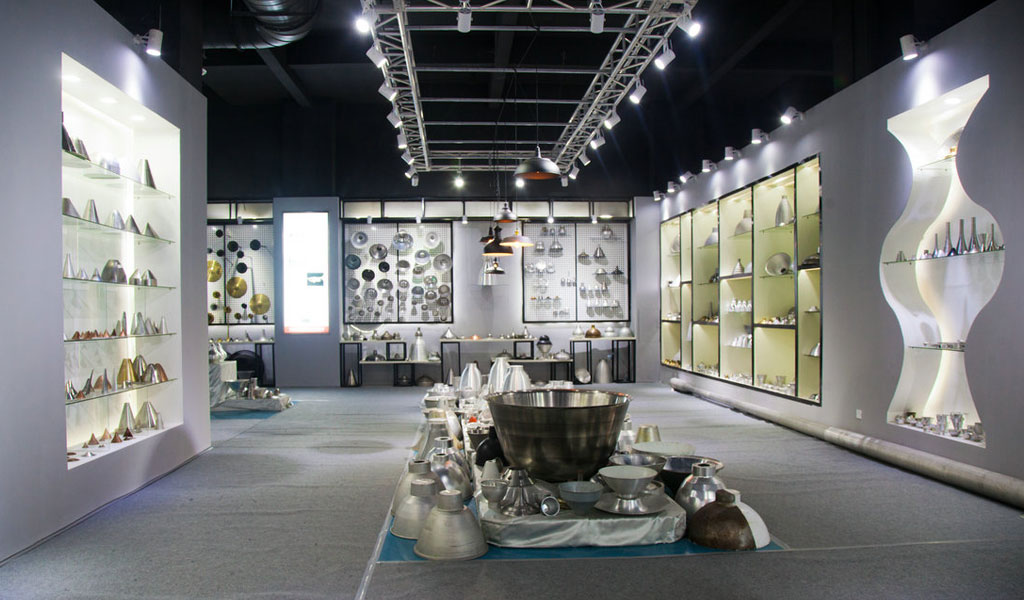
At BE-CU China Metal Spinning company, we make the most of our equipment while monitoring signs of excess wear and stress. In addition, we look into newer, modern equipment and invest in those that can support or increase our manufacturing capabilities. Our team is very mindful of our machines and tools, so we also routinely maintain them to ensure they don’t negatively impact your part’s quality and productivity.
Talk to us today about making a rapid prototype with our CNC metal spinning service. Get a direct quote by chatting with us here or request a free project review.
BE-CU China CNC Metal Spinning service include : CNC Metal Spinning,Metal Spinning Die,Laser Cutting, Tank Heads Spinning,Metal Hemispheres Spinning,Metal Cones Spinning,Metal Dish-Shaped Spinning,Metal Trumpet Spinning,Metal Venturi Spinning,Aluminum Spinning Products,Stainless Steel Spinning Products,Copper Spinning Products,Brass Spinning Products,Steel Spinning Product,Metal Spinnin LED Reflector,Metal Spinning Pressure Vessel,
